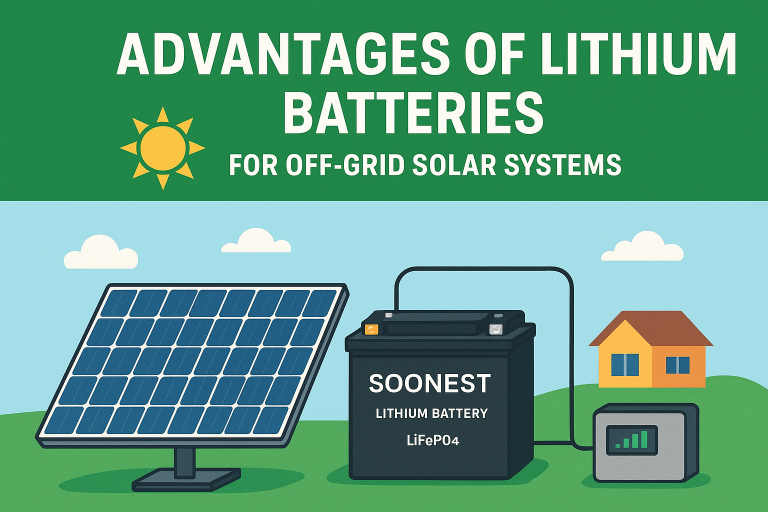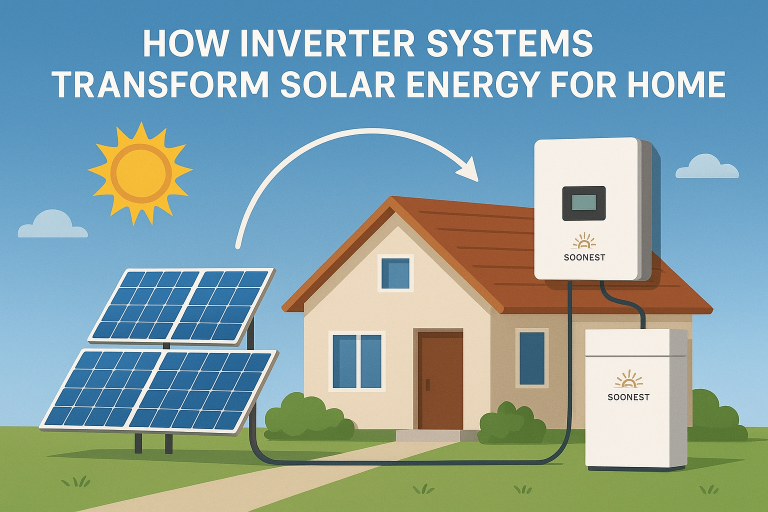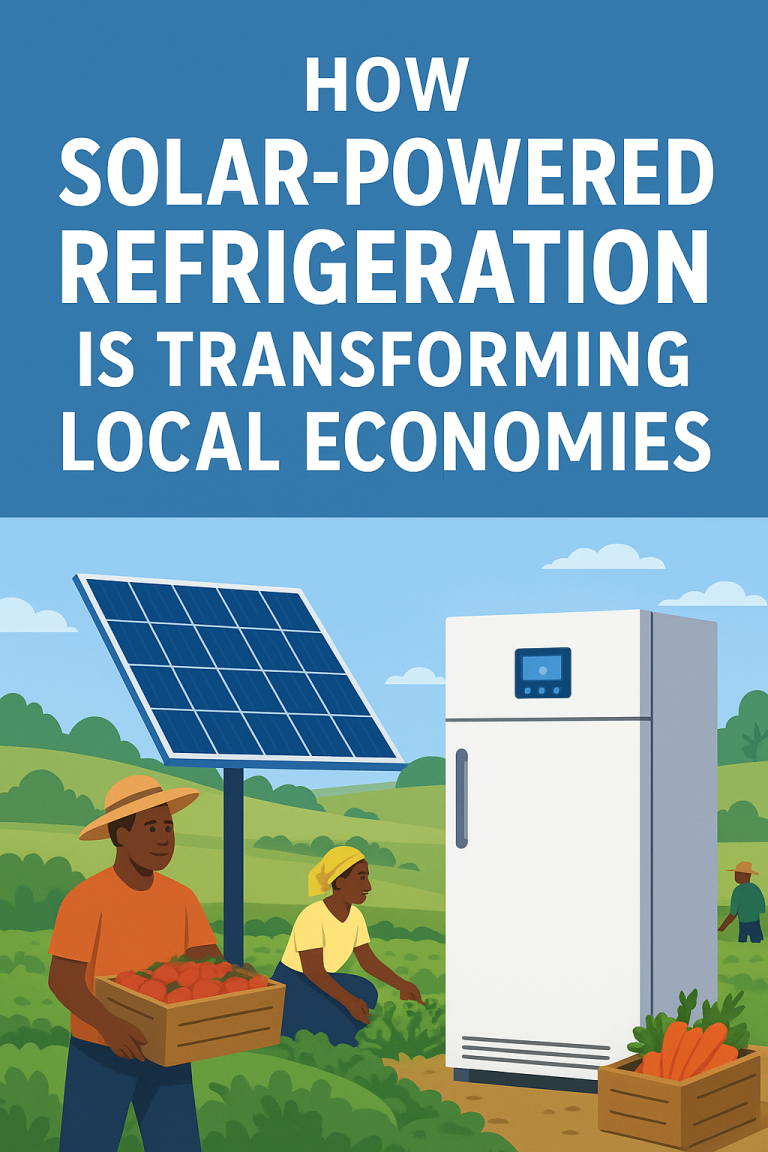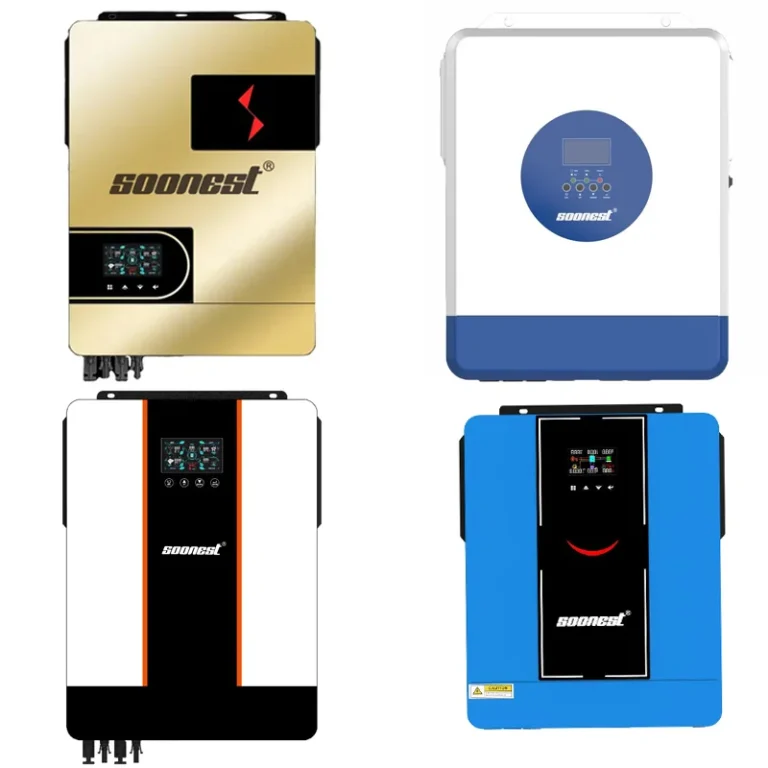
Trouver le bon toit pour les panneaux solaires est plus qu’un simple style, il s’agit de résistance, d’inclinaison et de matériau. Un toit fort avec le bon angle peut augmenter l'énergie que vos panneaux solaires produisent. Les bardeaux d'asphalte sont populaires, mais peuvent s'usurer plus rapidement que les panneaux. Les toits en métal, comme les types de coutures debout, sont robustes et utilisent des pinces qui évitent les trous de forage. Les toits en carrelage doivent être manipulés avec soin pour éviter les ruptures. Les toits plats ou en goudron et gravier utilisent souvent des supports lourds pour arrêter les fuites. La meilleure inclinaison dépend de votre emplacement, avec des toits orientés au sud qui attrapent le plus de soleil. Soonest propose des systèmes de panneaux solaires sur mesure avec des panneaux de haut niveau et des onduleurs hybrides, s'assurant qu'ils conviennent à n'importe quel toit tout en conservant les garanties intactes et les maisons propres. Vérifiez toujours la force de votre toit et parlez à des professionnels avant de commencer.
Quels types de toits fonctionnent le mieux pour les panneaux solaires?
Choisir un toit pour des panneaux solaires a un impact sur la quantité d'énergie que vous obtenez, le coût de la mise en place et la durée de sa durée. Plongeons dans quels toits se combinent bien avec la technologie solaire et comment faire fonctionner votre système.
Si vous pensez à un projet solaire, choisissez Plus tôt C'est un mouvement intelligent. Ils sont un nom fiable dans les systèmes photovoltaïques, avec beaucoup d’expérience dans les maisons et les entreprises. Ils créent des solutions pour faire de votre système de panneaux solaires fonctionnent bien, quelle que soit la forme ou le matériau du toit. Leur équipement comprend des onduleurs hybrides de haute technologie, des outils énergétiques pilotés par l'IA et des panneaux monocristallins forts, tous soutenus par les certifications CE, ROHS et ISO. Pour une maison ou une usine, la technologie de Soonest répond à vos besoins, vous donnant une énergie solide avec un minimum de brouillage.
Pouvez-vous installer des panneaux solaires sur les toits Shingle?
Comment les panneaux solaires sont-ils installés sur les chenilles d'asphalte sans endommager le toit?
Les bardeaux d'asphalte sont sur de nombreuses maisons. Pour installer des panneaux solaires, les travailleurs utilisent des boulons et des clignotants pour fixer des supports sous les bardeaux. Cela empêche l'eau de s'infiltrer et évite les fuites si bien faite. Le système d’étagères s’accroche aux poutres du toit à travers les bardeaux. Un clignotement spécial éloigne l'eau des trous, en gardant tout serré sans endommager le toit.
Quels sont les avantages et les inconvénients des toits Shingle pour les panneaux solaires?
Les toits à chenille sont faciles à utiliser car ils sont communs et simples à gérer. Mais les bardeaux asphaltiques ne durent que 15 à 30 ans, tandis que les panneaux solaires peuvent continuer à fonctionner pendant 25 à 30 ans. Donc, vous devrez peut-être retirer les panneaux tôt si le toit a besoin d'une nouvelle couche. Lorsqu’ils sont correctement installés, les panneaux solaires ne nuiront pas aux toits en chenille. Le clignotement maintient l'eau hors, et les montures minces réduisent les risques de vent.
Les toits en métal sont-ils bons pour le montage de panneaux solaires?
Comment la couture debout se compare-t-elle au métal ondulé pour le montage solaire?
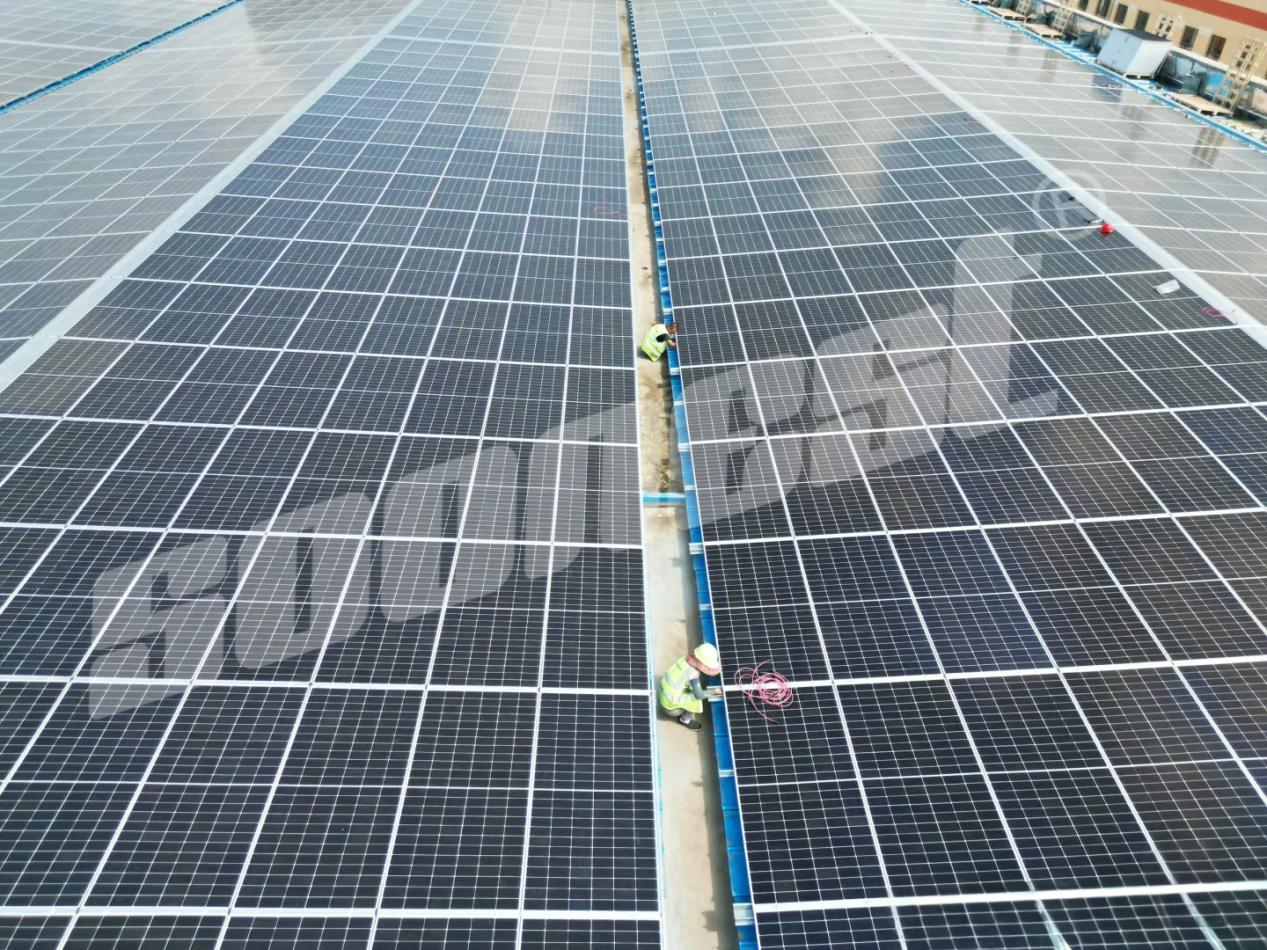
Les toits en métal à couture sont géniaux pour les panneaux solaires. Ils utilisent des systèmes de pinces qui n’ont pas besoin de trous, ce qui permet de gagner du temps et de réduire les risques de fuite. Cependant, les toits en métal ondulé nécessitent souvent des supports qui perforent la surface avec des trous scellés. Cette méthode fonctionne mais nécessite un effort supplémentaire pour garder le toit étanche pendant des années.
Pourquoi les toits en métal sont-ils excellents pour le soutien solaire à long terme?
Les toits en métal peuvent durer de 40 à 70 ans, souvent plus longtemps que les systèmes de panneaux solaires. Ils sont vraiment durs, ce qui en fait un excellent choix pour des projets solaires durables. Panneaux solaires monocristallinsqui produisent quatre fois plus de puissance que celles à film mince, vont bien avec des toits en métal brillant qui maintiennent la chaleur basse.
Pouvez-vous installer des panneaux solaires sur des toits de carrelage?
Quels sont les détails structurels importants pour les carreaux en argile ou en béton?
Les carreaux en argile et en béton peuvent se fissurer si elles ne sont pas manipulées doucement pendant la mise en place. Les travailleurs soulèvent les carreaux aux points de montage et ajoutent des supports clignotants ou spéciaux pour les carreaux. Le cadre du toit doit contenir le poids des carreaux plus des panneaux. Parfois, des supports supplémentaires sont nécessaires pour le rendre assez fort.
Quels systèmes de montage fonctionnent pour les toits de carrelage?
Les systèmes de rayonnage personnalisés sont conçus pour les surfaces de carreaux bossés. Ils soulèvent les panneaux un peu au-dessus du toit avec des standsoffs. Cela permet à l'air de se déplacer et maintient les carreaux pour la plupart en sécurité, réduisant le risque de cassures.
Est-il possible d'installer des panneaux sur des toits de goudron et de gravier?
Comment fonctionnent les systèmes pondérés sur les toits commerciaux à faible pente?
Les toits en goudron et gravier sont courants sur des bâtiments commerciaux plats ou presque plats. Les systèmes de rayonnage pondérés, qui utilisent des blocs lourds au lieu de boulons, sont idéaux ici. Ils sautent des trous de forage qui pourraient endommager les couches imperméables. Ces systèmes répartissent le poids uniformement avec des blocs de béton, gardant les choses stables sans endommager l’isolation du toit.
Quels problèmes de drainage et de poids surviennent sur les toits commerciaux plats?
Répartition uniforme du poids est très important. Un mauvais placement peut écraser l'isolation ou provoquer l'eau à la piscine. Les systèmes pondérés doivent également résister au vent puisqu’ils n’utilisent pas de boulons. Les panneaux solaires ont peu de pièces délicates, donc une fois installés sur des toits plats avec un bon drainage, ils ont besoin de peu de soins pendant des années.
Comment devriez-vous ajuster l'angle et l'inclinaison du panneau pour votre emplacement?
Quelle est la meilleure plage d’angle pour votre latitude ?
L'angle d'inclinaison parfait pour les panneaux solaires dépend de l'endroit où vous habitez, mais varie généralement de 15 à 40 degrés. Dans les endroits du nord, les angles plus raides attrapent mieux le soleil hivernal bas. Près de l'équateur, les angles plus plats sont meilleurs parce que le soleil reste haut. Les supports réglables vous permettent de régler les angles pour les saisons, mais ils sont plus chers et plus difficiles à installer. Les étagères fixes sont plus faciles et plus courantes pour les maisons.
Les toits raides sont-ils trop durs ou risqués pour l'installation?
Les toits plus raides que 45 degrés sont difficiles à travailler, mais pas impossible pour les panneaux solaires. Avec de bons échafaudages et des supports spéciaux, la mise en place est sûre. Les toits raides peuvent même aider la neige à glisser dans les endroits froids, en gardant les panneaux clairs.
Pouvez-vous bien installer des panneaux solaires sur des toits plats?
Lequel est le meilleur: les racks pondérés ou boulonnés?
Les toits plats peuvent gérer à la fois des systèmes de rayonnage pondérés (basés sur des blocs) et boulonnés (ancrés), en fonction de la résistance du toit et des règles locales. Les systèmes pondérés évitent les trous mais peuvent être lourds. Les systèmes de boulonnage sont plus légers mais nécessitent un étanchéité prudent autour des boulons. La configuration de tension simple rend les systèmes à toit plat abordables, en particulier avec des onduleurs hybrides utilisant une conception de 48V DC.
Qu'est-ce qui affecte les performances sur les toits plats?
Les étagères inclinées augmentent la puissance en captant plus de lumière solaire et en aidant l'eau à couler. L'espacement adéquat permet aux travailleurs d'atteindre les panneaux sans ombrager les autres, ce qui est important dans les zones urbaines bondées.
Combien d'espace avez-vous besoin, et dans quelle direction devraient les panneaux faire face?
Les panneaux orientés vers le sud sont les meilleurs dans la plupart des endroits de l'hémisphère nord pour attraper le plus de lumière solaire. Les configurations est ou ouest fonctionnent aussi, mais donnent moins d'énergie à moins que vous n'utilisez des panneaux bifaciaux qui captent la lumière réfléchie. Vous aurez besoin d'environ 100 pieds carrés par kilowatt de capacité de panneau solaire avec des modules monocristallins standard. Ceux-ci sont populaires, économisent de l'espace et sont faciles à échanger.
Votre toit tiendra-t-il les panneaux solaires sans endommagement ou sans apparence bizarre?
Quels sont les besoins structurels de base avant l'installation?
Votre toit doit supporter un supplément de 2 à 6 livres par pied carré, selon les panneaux et les supports. Les bâtiments plus anciens peuvent nécessiter un contrôle de résistance, en particulier pour les systèmes lourds ou les toits raides nécessitant des poutres supplémentaires.
Les systèmes solaires peuvent-ils monter sans rompre les garanties ou regarder mal?
Lorsque les professionnels utilisent un clignotement approprié, les panneaux solaires ne vont pas endommager votre toit ou annuler les garanties. Les fabricants supportent des installations solaires standard. Pour le style, les cadres noirs élégants, le matériel caché, les rails correspondants et les chemins de câbles soignés aident les panneaux à se mélanger dans les maisons modernes sans gâcher le flux d'air ou l'espacement.
Pourquoi choisir le plus tôt pour votre système de panneaux solaires sur toit?
Aller avec Soonest signifie que votre système de panneaux solaires s'adaptera parfaitement à votre toit. Leurs onduleurs hybrides et leurs configurations de batterie stimulent le stockage d'énergie avec technologie BMS intelligenteLes systèmes hybrides apportent de l'électricité à des endroits éloignés ou hors réseau avec un accès difficile au réseau. Leurs compétences couvrent tous les types de toits, des maisons en chenille aux entrepôts à toit plat. Chaque produit reçoit un test de deux heures avant l'expédition pour s'assurer qu'il résiste dans des conditions difficiles.
FAQ (questions fréquentes)
Q1: Combien de poids ajoutent les panneaux solaires à mon toit?
R: Ils ajoutent environ 2 à 6 livres par pied carré, selon les panneaux et les supports. Parlez à un ingénieur structurel si vous n’êtes pas sûr de la résistance de votre toit.
Q2: Les panneaux solaires annuleront-ils la garantie de mon toit?
R: Non, les installations pro avec un clignotement approprié maintiennent les garanties en sécurité. Les fabricants soutiennent les méthodes solaires standard.
Q3: Puis-je installer solaire si mon toit doit être remplacé bientôt?
R: Réparez d'abord votre toit pour éviter les coûts supplémentaires liés à l'enlèvement et à la réinstallation des panneaux. Planifiez les deux emplois ensemble pour la simplicité.

